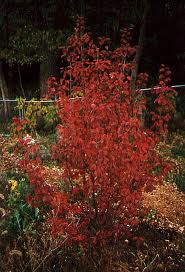Water Conservation Tips by Ralph Edge
Now That We Have Water Supply, What is the Proper Water Use for Landscaping in Dallas
Texas Licensed Irrigator Ralph Edge Shares Watering Tips for Water Conservation and Proper Water Use
Well the lakes are full and some lakes are even opening the gates to allow the current water supply to adjust to slightly below full. So hey, let’s end the water restrictions and start watering and fertilizing to get us back into the same mess we were in before.Wow! I am sure I have already made some new friends. You know… even at the height of the drought I had neighbors that watered to the extent that water supply ran down the street and into the storm drain some 250 yards away – poor water use in general.
Water conservation is just that, conserving the resources we have while we have them. So we must be smart with our water supply and make sure our water use is in the appropriate areas at the appropriate times for the appropriate purposes. Like my dad used to say..”It is too late to shut the barn door after the cow has left the building!” The simple fact of the matter is, we have more people in the Dallas area now than we did 10 years ago and basically the same amount of water supply. The city’s infrastructure is straining to keep up and our water use is at record rates. Unfortunately, we see no reason to stop – except with water restrictions. So what can one person do to help with water conservation and how does it impact landscaping in Dallas?
Let’s take the simple solution of proper irrigation scheduling. Take the example of adding 1 inch of water per week at the height of summer, just one inch. If a normal irrigation spray head has a precipitation rate of 1.1 to 1.5 inches per hour, then through simple deduction, we know that spray head will need to run about 1 hour or 60 minutes to achieve 1 inch of water delivered to your lawn and seriously, that will be plenty.So how do we accomplish that? With our heavy alkaline clay soils that spray head should not run more than 7 minutes at any one run time. Otherwise, the rest of the water supply will run down the street and into the storm sewer – not good water use. If your lawn has a dramatic slope, then the run time will be even less. Repeat the term “cycle and soak” over and over again, that will be your new mantra.
Cycle and soak is the art and discipline of irrigating just enough for the soil to absorb the water supply with minimal run-off. Consider the situation of the two day a week watering schedule Mondays and Fridays as an example - start times of 2am, 4am, 6am, and 8am each run being 7 minutes. So 4 run times of 7 minutes each, equals 28 minutes and times 2 for 2 days of watering….Wow! No run-off and your plants look better than they ever have…Why?
Well glad you asked…The time between the run times allowed the soil to absorb the water supply without unnecessary run-off and the plant actually received more water than a straight 40 minute runtime. Why is this? Once again, 7 minutes to the yard and then 33 minutes of water down the street – again, a poor water conservation plan.
Cycle and Soak allows the vast, I repeat the vast, majority of the water to go where it needs to go and that is to your turf and to your plants and not to the storm sewer. No matter how much you water the storm sewer or the side walk, they will never get bigger or greener – and I know this is not where you want your water supply going.
Water conservation is not simply doing without water, water conservation is the proper utilization of water that allows for the growth of your landscape and the reduction of the amount of water used….how can that be so simple?Thanks for Stopping By..................................and Remember "Enjoy the Life"
Ralph Edge





















